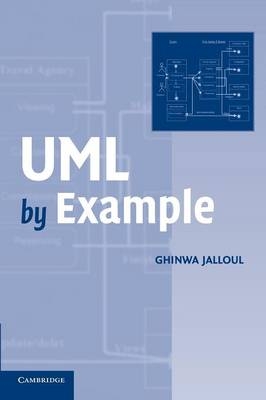
UML by Example
Seiten
2004
Cambridge University Press (Verlag)
978-0-521-00881-5 (ISBN)
Cambridge University Press (Verlag)
978-0-521-00881-5 (ISBN)
This systematic introduction to object-oriented software development is suitable for teaching as well as for practicing software engineers seeking to add rigour to their techniques. It features seven case studies derived from small software projects delivered to real users, preceded by an overview of object-oriented modelling artifacts in UML.
This is a step-by-step introduction to object-oriented software development. It is suitable for teaching and for self study by practising software engineers seeking to add rigour to their techniques. Seven complete case studies are included along with several smaller examples derived from small software projects developed for and delivered to real users. These examples make use of a bridge process, which presents a systematic approach for developing analysis models and unfolding these incrementally and iteratively through to design models and implementation. The process could be viewed as one example of unified software development and has the potential of being scalable to large software problems. It also provides a model for organising deliverables obtained throughout different phases of the software life cycle. These case studies provide a medium for experimental use and act as templates that can be tailored by readers to fit their specific needs and circumstances.
This is a step-by-step introduction to object-oriented software development. It is suitable for teaching and for self study by practising software engineers seeking to add rigour to their techniques. Seven complete case studies are included along with several smaller examples derived from small software projects developed for and delivered to real users. These examples make use of a bridge process, which presents a systematic approach for developing analysis models and unfolding these incrementally and iteratively through to design models and implementation. The process could be viewed as one example of unified software development and has the potential of being scalable to large software problems. It also provides a model for organising deliverables obtained throughout different phases of the software life cycle. These case studies provide a medium for experimental use and act as templates that can be tailored by readers to fit their specific needs and circumstances.
1. Modeling artifacts and relations; 2. Bridge: a systematic process model; 3. Reservations online; 4. Web page maker; 5. Simulating a robot arm; 6. Math tutor; 7. Distribution view.
| Erscheint lt. Verlag | 19.1.2004 |
|---|---|
| Zusatzinfo | Worked examples or Exercises; 200 Line drawings, unspecified |
| Verlagsort | Cambridge |
| Sprache | englisch |
| Maße | 153 x 229 mm |
| Gewicht | 383 g |
| Themenwelt | Informatik ► Software Entwicklung ► Objektorientierung |
| Informatik ► Software Entwicklung ► UML | |
| ISBN-10 | 0-521-00881-6 / 0521008816 |
| ISBN-13 | 978-0-521-00881-5 / 9780521008815 |
| Zustand | Neuware |
| Haben Sie eine Frage zum Produkt? |
Mehr entdecken
aus dem Bereich
aus dem Bereich
objektorientierte Entwicklung modularer Maschinen für die digitale …
Buch | Hardcover (2024)
Hanser (Verlag)
44,99 €
Entwicklung von GUIs für verschiedene Betriebssysteme
Buch (2023)
Hanser, Carl (Verlag)
39,99 €
Principles and Practice Using C++
Buch | Softcover (2024)
Addison Wesley (Verlag)
85,95 €


